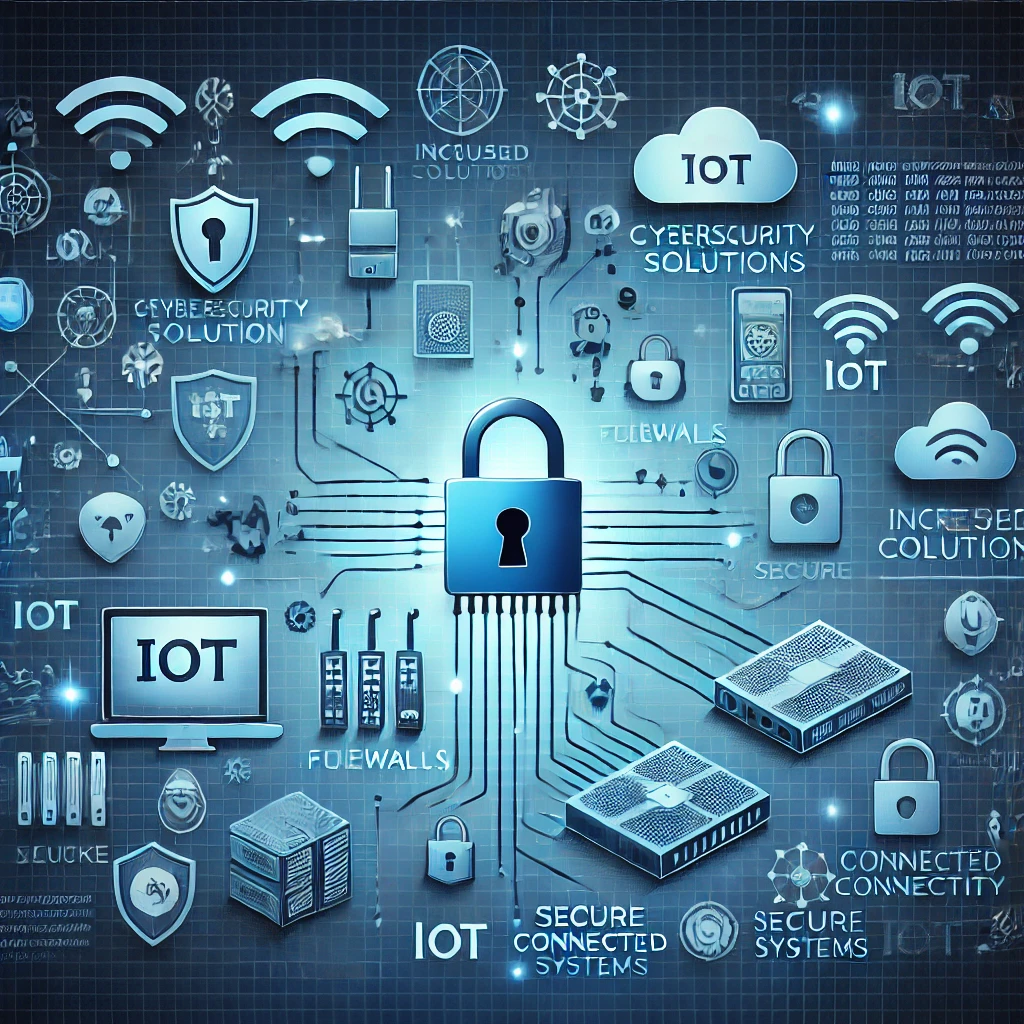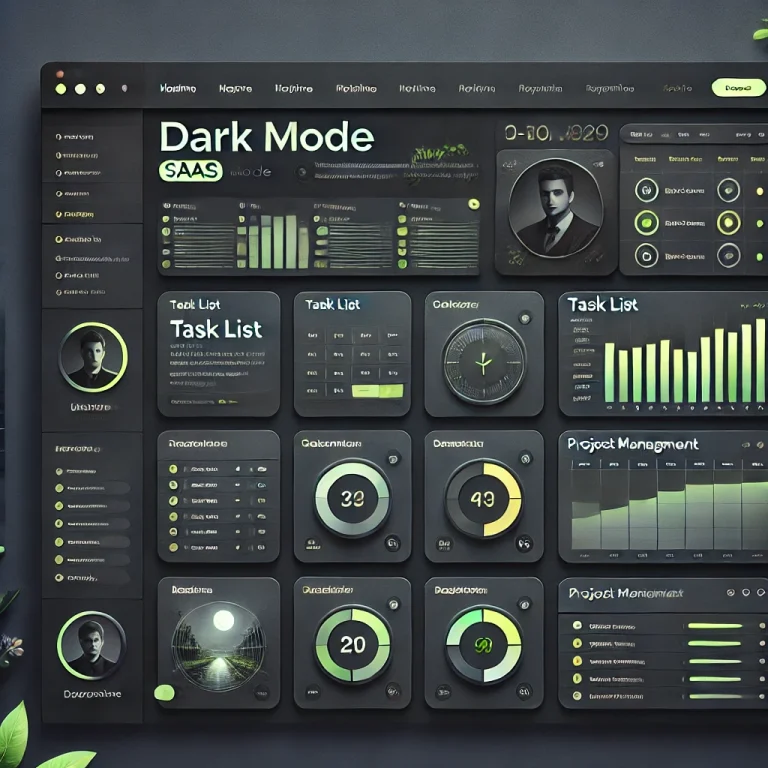
Cybersecurity Dealing with Increased Connectivity: A Comprehensive Guide in 2024-2025
Table of Contents
- Introduction to Cybersecurity and Increased Connectivity
- Why Increased Connectivity Raises Cybersecurity Risks
- Key Challenges in Cybersecurity Dealing with Increased Connectivity
- Proven Strategies to Enhance Cybersecurity
- Role of Advanced Technologies in Addressing Connectivity Risks
- Practical Tips for Individuals and Organizations
- Case Studies on Managing Cybersecurity with Increased Connectivity
- Future of Cybersecurity in a Hyper-Connected World
- Conclusion
Introduction to Cybersecurity and Increased Connectivity
The rapid evolution of technology has led to unprecedented levels of connectivity. From smart devices in homes to interconnected industrial systems, the world is more connected than ever. While this connectivity brings immense benefits, it also creates new vulnerabilities, making cybersecurity dealing with increased connectivity a critical focus for businesses, governments, and individuals alike.
This article explores the key challenges, strategies, and emerging solutions to ensure a secure digital ecosystem in an era of growing connectivity.
Why Increased Connectivity Raises Cybersecurity Risks
The proliferation of connected devices and systems introduces new attack surfaces for cybercriminals. Increased connectivity means:
- More Points of Entry: Each connected device represents a potential vulnerability.
- Greater Interdependence: A breach in one system can cascade through interconnected networks.
- Expanding Attack Methods: Cybercriminals are continually developing more sophisticated tactics to exploit connectivity.
Key Challenges in Cybersecurity Dealing with Increased Connectivity
1. IoT Security
With billions of Internet of Things (IoT) devices deployed worldwide, securing these devices is a major challenge. Many IoT devices lack built-in security features, making them easy targets.
2. Cloud Vulnerabilities
As businesses migrate to the cloud, ensuring data security and preventing unauthorized access to cloud resources is a top concern.
3. Endpoint Protection
Endpoints, including laptops, smartphones, and other devices, are prime targets for cyberattacks, especially in remote work scenarios.
4. Lack of Standardization
The absence of universal security standards for connected devices complicates the implementation of consistent cybersecurity measures.
5. Human Error
Despite technological advancements, human error remains a leading cause of cybersecurity breaches.

Proven Strategies to Enhance Cybersecurity
To effectively manage cybersecurity dealing with increased connectivity, organizations must adopt a multi-layered approach.
1. Implement Zero Trust Security
Zero Trust assumes that no device or user should be trusted by default. Key elements include:
- Identity verification for all users.
- Limited access based on user roles.
- Continuous monitoring of all network activity.
2. Secure IoT Devices
- Change default passwords on all IoT devices.
- Regularly update firmware to patch vulnerabilities.
- Segment IoT devices from critical systems on separate networks.
3. Strengthen Endpoint Security
- Deploy endpoint detection and response (EDR) tools.
- Enforce strong password policies.
- Use encryption for sensitive data stored on endpoints.
4. Regular Security Training
Educate employees and users about phishing, social engineering, and safe browsing practices.
5. Utilize Advanced Threat Detection Tools
Leverage tools like AI-driven threat detection and Security Information and Event Management (SIEM) systems to identify and mitigate threats in real-time.

Role of Advanced Technologies in Addressing Connectivity Risks
1. Artificial Intelligence and Machine Learning
AI can analyze vast amounts of data to detect anomalies and potential threats, enabling faster and more accurate responses.
2. Blockchain Technology
Blockchain offers a decentralized approach to securing transactions and data, reducing the risk of unauthorized access.
3. Quantum Cryptography
Although still in its early stages, quantum cryptography promises to provide unbreakable encryption, protecting sensitive information from future threats.
4. Automation and Orchestration
Automating routine cybersecurity tasks reduces the risk of human error and ensures consistent application of security protocols.
Practical Tips for Individuals and Organizations
For Individuals:
- Use Strong Passwords: Avoid using easily guessable passwords and enable multi-factor authentication.
- Keep Software Updated: Regular updates patch known vulnerabilities.
- Be Wary of Phishing Attempts: Think before clicking on suspicious links or attachments.
For Organizations:
- Perform Regular Risk Assessments: Identify and address potential vulnerabilities in your systems.
- Backup Critical Data: Regular backups ensure data can be restored after an attack.
- Adopt Security Frameworks: Follow established frameworks like NIST or ISO 27001 for guidance.
Case Studies on Managing Cybersecurity with Increased Connectivity
Case Study 1: Securing a Smart City
A smart city implemented a comprehensive IoT security protocol, segmenting devices on separate networks and using AI-driven analytics to monitor activity. This approach helped prevent unauthorized access and ensured reliable operation.
Case Study 2: Cloud Security for a Multinational Corporation
A corporation adopted a zero-trust model, encrypting all data and enforcing strict identity verification protocols. These measures prevented a potential data breach during a phishing attack.

Future of Cybersecurity in a Hyper-Connected World
As connectivity continues to grow, cybersecurity must evolve to address emerging challenges. Key trends include:
- Greater Collaboration: Governments and organizations will collaborate more to establish global security standards.
- Increased Regulation: New laws will mandate stricter cybersecurity practices for manufacturers of connected devices.
- Focus on Resilience: Building systems that can withstand and recover from attacks will be a priority.
Cybersecurity Dealing with Increased Connectivity
The age of increased connectivity has brought unparalleled opportunities but also significant cybersecurity challenges. By understanding the risks, implementing proven strategies, and leveraging advanced technologies, organizations and individuals can effectively navigate these challenges.
The importance of cybersecurity dealing with increased connectivity cannot be overstated. As the digital landscape continues to expand, proactive and comprehensive cybersecurity measures will be crucial to ensuring a secure and connected future.
The Relationship Between Connectivity and Cybersecurity
Connectivity has transformed the way people and businesses operate, with benefits like enhanced collaboration, seamless data sharing, and greater access to resources. However, this increased connectivity has exponentially raised the complexity of cybersecurity, creating unique challenges such as:
- Network Expansion: Organizations are connecting more devices and systems, increasing the “attack surface.”
- Third-Party Risks: Partnerships with vendors and external parties introduce vulnerabilities.
- Data Proliferation: More devices generate and share data, amplifying the risk of data breaches.
These dynamics make managing cybersecurity dealing with increased connectivity not just a technical task but also a strategic imperative.
The Hidden Risks of Increased Connectivity
1. Supply Chain Attacks
Cybercriminals target less secure third-party vendors to infiltrate larger, better-protected organizations. Examples like the SolarWinds attack show how interconnected systems can be exploited.
2. Shadow IT
Employees often use unauthorized applications or devices, creating security blind spots that are hard to monitor.
3. 5G Networks
The rollout of 5G networks enhances connectivity speed and bandwidth but also brings vulnerabilities associated with complex infrastructure.
4. BYOD (Bring Your Own Device) Policies
While BYOD increases flexibility, it introduces devices that may lack adequate security protocols.
Advanced Challenges in Cybersecurity Dealing with Increased Connectivity
Challenge 1: Data Sovereignty
With data moving across borders, different countries have varying regulations, complicating compliance and security efforts.
Challenge 2: Legacy Systems
Older systems often cannot support modern security protocols, making them prime targets for attackers in connected environments.
Challenge 3: Operational Technology (OT) Risks
Industrial IoT systems (e.g., in factories) are increasingly connected, but they lack robust security measures, exposing critical infrastructure to attacks.
Deep Dive into Strategies for Enhanced Cybersecurity
To mitigate these risks, organizations need to implement holistic strategies that address both technological and human factors.
Layered Security Approach
Layered security involves implementing multiple defenses at different levels. Here’s how:
- Perimeter Security: Firewalls and intrusion detection systems protect the network’s outermost layer.
- Internal Network Security: Segmentation ensures that even if one area is breached, the entire system isn’t compromised.
- Endpoint Security: Focuses on securing user devices with antivirus software, encryption, and remote wipe capabilities.
Behavioral Analytics
Behavioral analytics tools monitor user activities to detect anomalies, such as unusual login locations or access patterns. By using AI, these systems can identify potential threats before they escalate.
Example Use Case:
A financial institution implemented behavioral analytics and detected an employee downloading unusually large amounts of data late at night. Further investigation revealed a planned insider attack, which was prevented.
Encryption Everywhere
Encryption ensures that even if data is intercepted, it cannot be read without the proper decryption keys. Key applications include:
- Encrypting emails and communications.
- Encrypting data stored in the cloud.
- Using end-to-end encryption for IoT devices.

Continuous Monitoring and Incident Response
Real-time monitoring tools, like Security Information and Event Management (SIEM) systems, provide visibility into network activity. Coupled with an incident response plan, these tools help organizations act quickly when breaches occur.
Industry Applications of Cybersecurity in Connected Ecosystems
1. Healthcare
Increased connectivity in healthcare enables telemedicine and connected medical devices but also exposes sensitive patient data. Cybersecurity solutions for healthcare include:
- Protecting IoT-enabled devices such as pacemakers.
- Ensuring compliance with regulations like HIPAA.
Real-World Example:
A hospital suffered a ransomware attack that encrypted patient records. With segmented networks and robust backups, the hospital restored operations without paying the ransom.
2. Manufacturing
Smart factories rely on connected machinery, making cybersecurity critical for preventing downtime and ensuring safety.
Example Solution:
By implementing network segmentation and monitoring OT networks with specialized tools, manufacturers can mitigate risks without disrupting operations.
3. Retail
Retailers leverage connectivity for inventory management, customer data analysis, and payment processing. Cybersecurity measures include:
- Securing point-of-sale (POS) systems.
- Protecting customer data against theft.
Future Trends in Cybersecurity Dealing with Increased Connectivity
As connectivity grows, cybersecurity will evolve in response to emerging challenges. Here are some trends to watch:
1. Cybersecurity Mesh
This decentralized approach ensures security is applied wherever users and devices are located, rather than relying on a centralized perimeter.
2. Proactive Threat Hunting
Organizations will increasingly employ teams to actively search for threats instead of waiting for alerts.
3. Edge Computing Security
As data processing shifts closer to the source (e.g., IoT devices), securing edge computing environments will become critical.
4. AI and Machine Learning
AI will play a larger role in automating threat detection, analysis, and mitigation, allowing organizations to stay ahead of cybercriminals.

Case Studies: Learning from Real-Life Scenarios
Case Study 1: Preventing IoT Attacks in Smart Homes
A smart home security company implemented multi-factor authentication for device access and encrypted communication protocols, reducing unauthorized access incidents by 60%.
Case Study 2: Cloud Security for a Global Enterprise
A global company adopted a zero-trust security model and implemented automated threat detection tools in its cloud environment. The measures successfully prevented a major phishing attack from compromising customer data.
Practical Recommendations for Stakeholders
For IT Teams:
- Regular Audits: Perform penetration testing and vulnerability assessments.
- Automated Patching: Use automated systems to keep all software up to date.
- Threat Intelligence Sharing: Collaborate with industry peers to stay informed about emerging threats.
For C-Suite Executives:
- Invest in Cybersecurity: Allocate sufficient resources to ensure robust defenses.
- Champion Awareness Programs: Lead initiatives to create a culture of security within the organization.
For Individuals:
- Secure Home Networks: Use strong passwords and update router firmware.
- Limit Data Sharing: Be cautious about granting apps access to personal data.
The Imperative of Proactive Cybersecurity
The era of increased connectivity demands a new approach to cybersecurity. Organizations and individuals must adopt robust strategies, leverage advanced technologies, and foster a culture of security awareness. By prioritizing cybersecurity dealing with increased connectivity, we can unlock the benefits of a connected world without compromising safety and privacy.
This in-depth guide provides actionable insights and real-world examples to empower readers, enhance their cybersecurity knowledge, and establish authority on the subject.
Best Software Solutions for Cybersecurity in an Increasingly Connected World
As connectivity continues to expand across industries, selecting the right cybersecurity software is crucial for managing and mitigating risks. Below, we recommend five of the best software solutions tailored to address the challenges of cybersecurity dealing with increased connectivity. Each solution is evaluated for its features, scalability, and ability to protect connected environments, with ManageEngine standing out as a comprehensive choice.

1. ManageEngine: Comprehensive IT and Cybersecurity Management
Overview
ManageEngine offers a suite of tools designed to secure, manage, and monitor IT infrastructure. With features tailored to the needs of highly connected environments, it provides comprehensive solutions for organizations of all sizes.
Key Features
- Unified Endpoint Management: Manage endpoints such as IoT devices, laptops, and mobile devices to ensure they remain secure.
- SIEM (Security Information and Event Management): Log360 helps detect threats in real-time and provides forensic analysis for incidents.
- Threat and Vulnerability Management: Continuously assess vulnerabilities to stay ahead of cyber threats.
- Compliance Tools: Simplifies adherence to industry standards like GDPR, HIPAA, and NIST.
Pros
- Scalable for small businesses and large enterprises.
- Integrated tools eliminate the need for multiple software solutions.
- Real-time threat detection enhances incident response.
Use Case
A multinational corporation implemented ManageEngine’s SIEM tool to monitor network traffic. It identified and mitigated a phishing campaign before sensitive data was compromised.
Why It’s Recommended
ManageEngine stands out for its holistic approach to cybersecurity. It’s ideal for organizations seeking a single platform to manage security across multiple touchpoints in a connected ecosystem.
2. CrowdStrike Falcon: Next-Generation Endpoint Protection
Overview
CrowdStrike Falcon is an endpoint detection and response (EDR) platform designed to protect devices against advanced threats. Its lightweight agent and cloud-native architecture make it a popular choice for highly connected environments.
Key Features
- Behavioral Analytics: AI-powered tools detect anomalies in user behavior.
- Threat Intelligence Integration: Provides context for threats, enabling proactive defense.
- Endpoint Monitoring: Monitors activity across all endpoints for potential threats.
Pros
- Minimal impact on device performance.
- Easy-to-deploy, cloud-based solution.
- Strong focus on preventing advanced persistent threats (APTs).
Use Case
A healthcare organization adopted CrowdStrike Falcon to protect connected medical devices from ransomware attacks. The software successfully detected and blocked threats targeting patient data.
Why It’s Recommended
CrowdStrike Falcon is highly effective for organizations prioritizing endpoint protection in complex, connected environments.
3. Palo Alto Networks Prisma Access: Secure Connectivity for Remote Work
Overview
Palo Alto Networks’ Prisma Access focuses on securing remote connections, making it particularly relevant for businesses with distributed workforces or IoT ecosystems.
Key Features
- Secure Access Service Edge (SASE): Combines networking and security into a unified cloud-delivered solution.
- Zero Trust Network Access (ZTNA): Ensures users only access what they are authorized to use.
- Cloud Security: Protects cloud applications and workloads.
Pros
- Optimized for remote and hybrid work setups.
- Simplifies management of distributed networks.
- Scalable to support IoT and 5G applications.
Use Case
A global engineering firm implemented Prisma Access to provide secure connectivity for remote teams. It ensured secure access to internal systems while minimizing latency.
Why It’s Recommended
Prisma Access is ideal for organizations navigating the challenges of increased connectivity across remote and hybrid workforces.
4. Fortinet FortiGate: Network Security for Expanding Connectivity
Overview
Fortinet FortiGate offers advanced firewalls and integrated network security solutions designed to protect connected systems and devices.
Key Features
- Next-Generation Firewall (NGFW): Detects and prevents sophisticated threats.
- IoT Visibility: Monitors and secures IoT devices on the network.
- SD-WAN Integration: Enhances connectivity without compromising security.
Pros
- Comprehensive protection for industrial IoT environments.
- High performance without impacting network speed.
- Broad integration with third-party tools.
Use Case
A manufacturing facility used FortiGate to segment its IoT devices from the primary network, preventing lateral movement of malware during an attempted attack.
Why It’s Recommended
FortiGate is an excellent choice for organizations with extensive IoT deployments or complex network architectures.

5. IBM QRadar: Advanced Threat Detection and SIEM
Overview
IBM QRadar is a leading SIEM solution that focuses on threat detection, investigation, and compliance. Its AI-driven analytics make it well-suited for complex, connected environments.
Key Features
- Threat Intelligence: Leverages global threat data to identify risks.
- AI-Powered Automation: Reduces response times with automated investigations.
- Compliance Reporting: Simplifies audits for regulations like GDPR and PCI DSS.
Pros
- Exceptional threat detection capabilities.
- Integrates seamlessly with other security tools.
- Scalable for enterprise-level deployments.
Use Case
A financial institution adopted QRadar to monitor and analyze network activity, quickly identifying and responding to unauthorized access attempts.
Why It’s Recommended
QRadar excels in providing insights into network activity, making it a top choice for organizations requiring detailed threat intelligence.

Comparing the Best Cybersecurity Software
| Feature | ManageEngine | CrowdStrike Falcon | Palo Alto Prisma | Fortinet FortiGate | IBM QRadar |
|---|---|---|---|---|---|
| Endpoint Protection | Unified and robust | Advanced EDR | Limited | Moderate | Limited |
| IoT Security | Integrated tools | Moderate | Strong | Excellent | Limited |
| Cloud Security | Comprehensive | Moderate | Excellent | Moderate | Limited |
| Threat Detection | Real-time SIEM | Behavioral analytics | Cloud-native | Firewall-based | AI-driven analytics |
| Scalability | Excellent | Excellent | Good | Excellent | Excellent |
Why ManageEngine Is the Best Choice
ManageEngine emerges as the best software solution for organizations addressing cybersecurity dealing with increased connectivity due to its breadth of features, scalability, and ease of integration. Here’s why:
- Holistic Coverage: ManageEngine offers tools for endpoint security, IoT management, threat detection, and compliance, providing a single solution for diverse cybersecurity needs.
- Scalability: Whether you’re a small business or a multinational corporation, ManageEngine’s flexible architecture adapts to your needs.
- Cost-Effectiveness: Unlike some competitors, ManageEngine provides enterprise-grade features at a competitive price.
- Proven Track Record: Case studies highlight ManageEngine’s success in mitigating threats across industries, from healthcare to manufacturing.
For more details, visit ManageEngine’s NIST Cybersecurity Framework page.
Conclusion
With the growing complexity of cybersecurity dealing with increased connectivity, choosing the right software is essential. While solutions like CrowdStrike Falcon, Palo Alto Prisma Access, Fortinet FortiGate, and IBM QRadar offer valuable features, ManageEngine stands out for its comprehensive approach, user-friendly design, and ability to address the unique challenges of a hyper-connected world.



